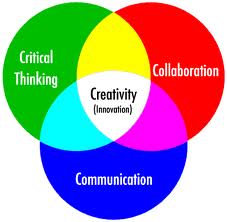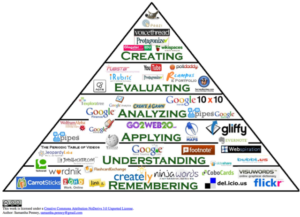The term 21st–century skills, or global skills, the catchword of recent times, is generally used to refer to certain core competencies such as collaboration, digital literacy, critical thinking, and problem-solving that advocates believe schools need to teach to help students thrive in today’s world (Cited from http://www.edweek.org/tsb/articles/2010/10/12/01panel.h04.html)
One of the key learning skills is creative thinking, and what better way to practice creative thinking, than through Creative Writing? From brainstorming to experimentation, from re-reading to re-drafting, through CW in the foreign language classroom, learners have ample opportunity not only to express themselves but to notice, check and correct their own and others errors (Schmidt, 1990; Freeman & Long, 1991). By working collaboratively to negotiate meaning (Long, 1996), students learn teamwork, to learn from each other.
Introducing CW into the foreign language classroom is an alternative way of teaching. And integrating technology wisely (Prensky, 2008), only where it would be useful, and when it would enhance the learning situation, would allow students to practice and improve their digital literacy. Depending on the type of tasks allocated, the carefuly selection of digital tools learners may stimulate, not only Lower Order Thinking Skills or LOTS, but also the highest of cognitive thinking in the foreign language classroom, also known as Higher Order Thinking Skills or HOTS (Bloom, 1956). Indeed, Create is one of the HOTS action verbs, required for deeper, critical thought as seen in Bloom’s Digital Taxonomy below:
Bloom, B. S. (ed.) (1956) Taxonomy of Educational Objectives, the classification of educational goals – Handbook I: Cognitive Domain New York: McKay
Larsen-Freeman, D., & Long, M. (1991). An introduction to second language acquisition research. London: Longman.
Long, M. H. (1996). The role of linguistic environment in second language acquisition. In W. C. Ritchie, & T. K. Bhatia, (Eds.), Handbook of second language acquisition (pp. 413-468). San Diego: Academic Press.
Prensky, M. (2008), From Digital Immigrants and Digital Natives to Digital Wisdom
Schmidt, R. (1990). The role of consciousness in second language learning. Applied Linguistics 11, 129-158.


